It perhaps seems like overkill to “celebrate” an anniversary like 85 years, but when you’re a wristwatch as old and as evergreen as the Reverso, it somehow becomes appropriate.
In honor of the long and successful career of the horological icon, let’s take a brief look back over the 85 years of the Reverso between 1931 and 2016.
Beginnings
India is where this most classic of all sports watches was born 85 years ago. The story so legendarily goes that colonial India was polo-crazy, with 175 polo clubs springing up around the country by the end of the nineteenth century.
The wristwatch – which had become all the rage in the early twentieth century – was not something that well-to-do polo players were wont to take off just to play their favorite sport. So many timepieces suffered broken crystals: sapphire crystal was not yet in use, so the only other choice was mineral crystal, in essence plain, fragile glass.
And there is no way that mineral crystal would stand up to the trials and tribulations of a polo match, during which well-trained polo ponies can obtain speeds of up to 60 kilometers per hour and the balls and sticks fly even faster and harder.
César de Trey, a close associate of Jacques-David LeCoultre who had had recently become involved in distributing luxury Swiss wristwatches, was visiting in India in 1930. After witnessing a game that inevitably ended in some smashed crystal, the Swiss countryman took this problem to heart.
He set engineer Alfred Chauvot to the task of inventing a case that would be much more suitable for the sport of polo. And in 1931 he came up with just such a case, filing a patent on March 4 in Paris for a casing that rotated on its own axis to protect the fragile crystal.
De Trey knew that there was only one manufacture in Switzerland to make such a complicated watch case, and he turned to Jaeger-LeCoultre to create the custom-shaped mechanism for the art deco-styled timepiece.
The rest, as they say, is history. It was a brilliant principle involving a simple mechanism of two spring-mounted spurs fitting into grooves on either side of the watch’s frame. And now 85 years later this same design (with a bit of modernization, of course) still enjoys great success.
Eighty-five years is a heck of a long time for any watch to maintain such a degree of popularity. Granted, though, the Reverso – whose name is Latin and means “I turn around” – did have a few ups and downs throughout close to a century’s worth of history.

This yellow gold timepiece from 1936 displaying an Indian beauty is the earliest known enameled Reverso
Its early history set the tone
The oldest known enameled Reverso depicts a beautiful Indian woman dressed in the manner of the Parsi, a community located mainly in the Bombay (Mumbai) region of India. Details regarding the love story behind this gorgeously enameled timepiece continue to be a secret, but what remains is the love affair between the Reverso’s case back and personal enameled artworks.
Indeed, the protective case back of the Reverso has always been used for personal embellishment, be it the enamel that has experienced extreme renaissance under the careful tutelage of the grande maison’s own Miklos Merczel as of 1992 or personal engravings (see Jaeger-LeCoultre’s Art Of In-House Enameling).
The continuing history of the Reverso is also intertwined with the manufacture’s mechanical creativity: some of the finest shaped movements in the history of watchmaking stem from the desire to outfit the Reverso with a large variation of calibers.
Alone in 1933, Jaeger-LeCoultre designed three new calibers for it: Caliber 404 intended for the smaller ladies’ models, Caliber 410 with subsidiary seconds at 6 o’clock, and Caliber 411 with sweep seconds.
Until the outbreak of World War II, Jaeger-LeCoultre had created no less than eleven different movements for the Reverso.
During World War II, production was definitively down, if not entirely out, like for every other timepiece – and remained so in post-war Europe, when all watch producers counted on reliable, round timepieces to boost sales.
In the 1970s, the Reverso received its first diamond setting, and in the 1980s under the tutelage of legendary manager Günter Blümlein, the case was revamped, thereby increasing the individual components needed for its manufacture from less than 30 to more than 50.
Developed, manufactured, assembled, and finished within Jaeger-LeCoultre’s own walls in Le Sentier, Switzerland, the Reverso case remains one of the most complicated on the market.
The modern age
For the Reverso’s sixtieth anniversary in 1991, the manufacture’s engineers decided to use that interesting flip side for a different purpose: complications on both the front and the back. Simultaneously, it was given a larger case, and the “Grande Taille” was born.

The Reverso 60ème in the larger “grande taille” case for the 60th anniversary of the Jaeger-LeCoultre icon
Following on, the manufacture’s creative watchmakers added a second time zone to the flip side of the Reverso for the first time, which opened a whole new expanse of possibilities for the reborn icon.
The Reverso Tourbillon arrived in 1993 housed in an 18-karat pink gold case – the first tourbillon in the flip case and one of the first serial wristwatch tourbillons at all – in a limited series of 500 pieces. Its back was entirely occupied by the tourbillon and power reserve indication of Caliber 828.
The following year brought the Reverso Duo, powered by Caliber 854. While the front dial displayed local time, the back was dedicated to home time as a 24-hour indication. Three years later in 1997, the more petite and decorative Reverso Duetto outfitted with Caliber 844 did the same for women.
By 2001 the first platinum case arrived in the Reverso line within a limited series of 500 pieces called the Reverso Platinum Number One. This skeletonized beauty was followed by the Reverso Platinum Number Two in 2003, also limited to just 500 pieces.
The Reverso Grande GMT of 2004 brought something new to the line: it was outfitted with a single movement powering the back-to-back dials displaying two different time zones. This was only possible thanks to Caliber 878, a manually wound movement featuring a power reserve of eight days.
The mechanics of exceptional jewels
In 2004, Jaeger-LeCoultre also continued its long love affair with exceptional Reverso timepieces for feminine wrists.
This was the year that Jaeger-LeCoultre introduced the breathtaking Grande Reverso 101, one of my all-time favorite watches. At the time, it was fittingly described by product manager Stéphane Belmont as “the grandeur of the infinitely small.”
It remains a mystery to me as to why the innovative créateurs at Jaeger-LeCoultre hadn’t come up with this before then, as it is a timepiece that most efficiently and beautifully combines all of the manufacture’s core points of feminine expertise.
The petite mechanical marvel Caliber 101, a mere 3.4 mm in height, is literally put on display in a breathtakingly hand-engraved version behind a sapphire crystal dial in the same Grande Reverso case used for the chunkier men’s watches.
The inside case back – generally decorated with perlage on the regular Reverso models – has been fabulously snow-set with diamonds of varying size and shape to provide a glittering backdrop for the mechanical star of the show. The movement appears to float within its sapphire crystal confines, without even a stem from the crown to disturb its manually wound 21,600 vibrations per hour.
That might seem very mysterious, but the secret is lifted once the swiveling Reverso case is rotated to reveal the backside. The crown located on the side of the case is not actually functional. To wind the watch, the crown is removed from its place of rest and inserted into the opening reserved for it on the case back. This beautiful timepiece-cum-jewel with its 1,106 diamonds (total carat weight: 3.93) will then remain wound for approximately 33 hours.
Not to be outdone by the watchmakers in Le Sentier, the gem setters at the Jaeger-LeCoultre facility in the Vallée de Joux created several more exceptional jeweled pieces in 2004, the most innovative of which is certainly the Grande Reverso Rock Setting.
Master gem setter Alan Kirchhof invented the new rock setting technique for Jaeger-LeCoultre. After turning the large baguette-cut diamonds and other gemstones like rubies upside down, practically positioning them girdle-up, Kirchhof secured them into place by pouring molten gold between them, thus creating a custom, yet invisible, setting. The process is very difficult and time-consuming as even the slightest slip of the hand or a metal temperature that is off by even one degree could damage several carats’ worth of the precious stones. The effect can be termed none other than absolutely breathtaking, and it goes without saying that the watch shown was a unique piece.
It should be noted that these timepieces constituted the first use of snow setting in the watch industry.
First automatic Reversos
Featuring the only automatic Reverso movement to that point in time, the Gran Sport Automatique of 2004 was positioned as both a women’s and a men’s timepiece. With a 45-hour power reserve, Caliber 960R is a manufacture movement comprising 226 hand-crafted parts beating at 28,800 vibrations per hour. The hours, minutes, sweep seconds, and date are featured on a matte black dial with charcoal grey zoning, with white luminescent Gran Sport numerals and silver-plated hour markers.
A trendy element that would take on more meaning for Jaeger-LeCoultre from here was the chestnut-colored, distressed calfskin strap with deployant clasp. The ensuing search for amazing straps naturally led the Swiss watchmaking to Casa Fagliano in Argentina, which once again tied into the polo theme.
A year later, the first automatic Reverso Grande Taille debuted at the 2005 edition of the SIHH, outfitted with Jaeger-LeCoultre Caliber 970 comprising 233 components and boasting 50 hours of power reserve.
Though the flip side of this Reverso displays a surface reserved for decoration, the front of it houses many of the functions that would generally be found on two sides: home time, second time zone, large date, subsidiary seconds, and day/night indicator for the second time zone. The reversible case is available in stainless steel and 18-karat rose gold on either a strap or a bracelet.
The 75th anniversary in 2006
The 75th anniversary of the Reverso ten years ago brought about a slew of interesting timepieces housed in the swiveling case.
One of these is the Reverso à Éclipses, one of its most artistic Reverso timepieces to date.
The name of the watch is misleading, though, for it has nothing to do with the astronomical phenomenon of the eclipse. Rather, the incredible function is a shutter located on the dial that can be opened and closed at will by the wearer.
The shutter can be opened, or even only partially opened, to reveal a work of art created by Merczel and his then-apprentice Sophie Quenaan (now the second most experienced enameler at Jaeger-LeCoultre). By the same token, the shutter can be completely closed, allowing the dial to remain metallic and secretive. Historically, Jaeger-LeCoultre has placed its enameled miniatures on the flip side of the Reverso case, but this time the artwork created using a brush comprising one single marten hair makes up the secret 18-karat gold dial under the metal shutters.
Jaeger-LeCoultre honored the timepiece’s Indian roots by choosing art inspired from the works of Renoir, Ingres, and Klimt as well as the anonymous masters of Mogul art and even a scene from the Kama Sutra.

An enameled nude is revealed here by opening the shutters of the Jaeger-LeCoultre Reverso à Éclipses
The gold plates underneath the enamel are first guilloché by Merczel using a pantograph, as regular guilloché created by using a rose engine would have deformed the thin plate. Then the plate is covered with a clear enamel, after which it is painted by the two artists in especially bright colors and fired at more than 800°C (making it grand feu). This process is known as champlevé and gives the finished work of art a depth and intensity not otherwise possible.
Jaeger-LeCoultre chose hand-wound Caliber 849 to power this masterpiece thanks to its svelte height. Three “grand feu” themes were created in 18-karat rose gold Grande Taille cases, each limited to 25 pieces: eight “Erotic” themes limited to three pieces each in platinum; 16 “Travel and Discovery” themes each also limited to three each in platinum cases; and “Chinese Zodiac” themes limited to twenty-eight each in red and blue in 18-karat rose gold cases.
Jaeger-LeCoultre also used the anniversary opportunity to try out something completely new: the first square Reverso!
Perfectly proportioned, the Reverso Squadra fit right in with the brand’s pursuit of the sports watch segment.
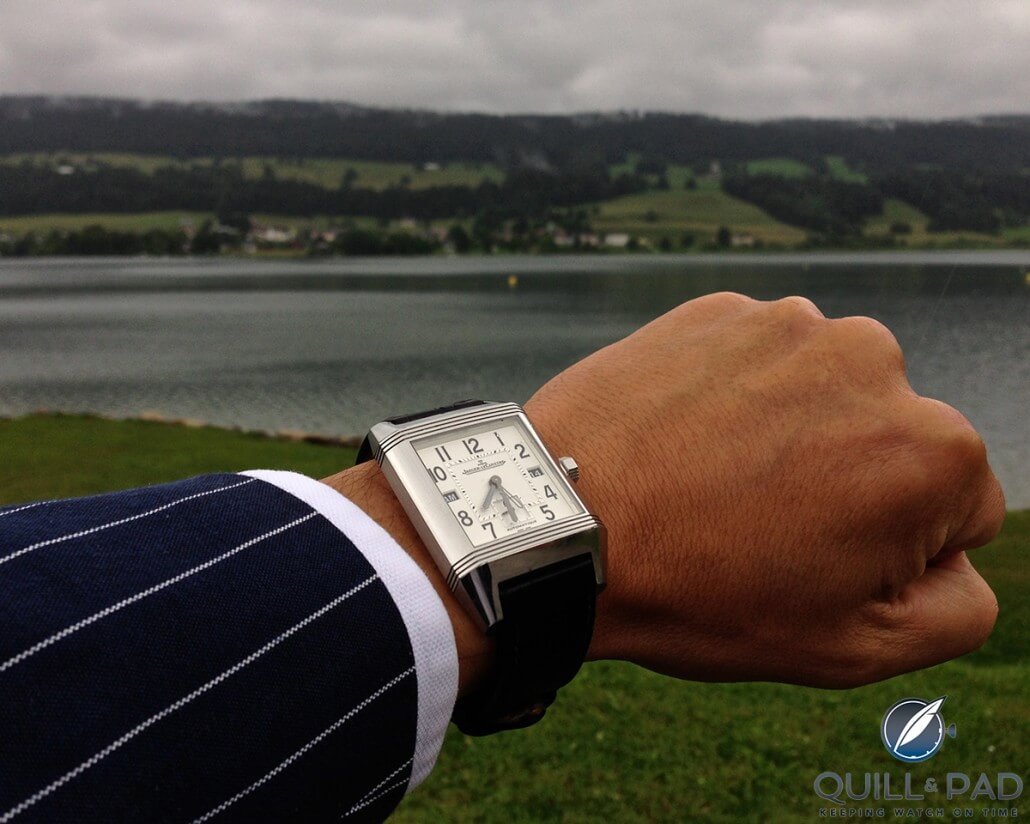
Wrist shot of the Jaeger-LeCoultre Reverso Squadra in the Vallée de Joux (photo courtesy Miguel Seabra, a prominent Squadra wearer)
Designer Janek Deleskiewicz based his drawings on a 75-year old patent that was stored at the manufacture. And he found just the right formula for turning the elegant, rectangular art deco case into a sporty square, filling out the wrist in a masculine way while maintaining the definite air of the Reverso.
It is a little-known fact that both the rectangular and the square case shapes were originally created at the same time, with the original creators choosing to move forward with the art deco-style rectangular case to fit the tastes of the era a little better. The square shape was thought to be too post-modern at the time, and remained in a drawer all those years.
Unfortunately, the Squadra also did not end up meeting the general tastes of the twenty-first century, and it has since been discontinued. I, for one, was a fan, though.
The Ultra-Complicated Reverso Grande Complication à Triptyque
Continuing the 75-year celebration at the 2006 SIHH, the brand introduced a Reverso combining displays of mean, sidereal, and perpetual times in one grand complication literally requiring the talents of 14 different technicians and approximately 700 components.
The French word triptyque translates as triptych in English, “an ancient Roman writing tablet with three waxed leaves hinged together, or a picture or carving in three panels side by side, or something composed or presented in three parts of sections,” according to Webster’s Collegiate Dictionary.
The Reverso Grande Complication à Triptyque utilizes every aspect of the unique Reverso case in order to house its eighteen complications properly. The front of the Reverso dial displays, almost as usual, the hours, minutes, a day/night indication, and subsidiary seconds on a one-minute tourbillon cage.
The flip side of this dial, utilizing the selfsame manually wound Caliber 175, is reserved for the astronomical functions that include sidereal time, a choice of astronomical charts for the northern or southern hemispheres, the hours of sunrise and sunset, which must be individually set up in the factory according to the geographical location of the owner, a zodiacal calendar, and the equation of time.
An incredibly unique thing is found in the base of this Reverso case, where one would usually encounter the circular grained inside of the metal case back. Instead, we see the extremely legible calendar dial powered by a module located within the base (case “back”). This dial shows a perpetual calendar including a retrograde digital date, leap year indication, hands for the day and month, and the phases and ages of the moon. The calendar module located here is only 1.7 mm high, a feat that is only achievable due to the fact that it does not include a winding mechanism.
This module receives its energy from the same two spring barrels that power the main movement, though it is transmitted in a unique manner. At exactly midnight, if the swiveling Reverso case is in a closed position, a lever descends into a snail cam’s notch, instantaneously liberating energy that has been stored in the barrel. This energy activates an actuator in the module, which in fact advances the retrograde date and all the other relevant calendar displays located there.
Ensuring that the case is properly connected at midnight could not be simpler. All the wearer has to do is activate a bolt mechanism to retain the case in the correct position. Otherwise, the wearer only needs to choose the dial he or she would prefer to look at while this process is taking place.
The Reverso Grande Complication à Triptyque contains a tourbillon escapement, but not just any. Jaeger-LeCoultre decided to forego using the traditional Swiss pallet escapement in favor of a direct system, which the company has termed an ellipse isometer escapement, inspired by traditional marine chronometer escapements that send impulses only once per complete vibration as compared to today’s common escapements, which do so twice per complete oscillation, once after each beat (the tick and the tock, so to speak).
It should also be noted that Jaeger-LeCoultre has also premiered the use of high-tech materials in this traditional type of escapement in typical JLC fashion, without the fanfare associated with it at the moment by other companies.
Since monocrystalline silicon was the best material for the job of making the blocking-lever arm and the escape wheel, Jaeger-LeCoultre went ahead and used it, simultaneously guaranteeing the movement a number of advantages such as anti-magnetism, corrosion-resistance, and, of course, no need for escapement lubrication.
Caliber 175’s one-minute tourbillon is also one of ethereal lightness as its filigreed cage is composed of Grade 5 titanium, weighing only 0.08 grams. The cage and its new escapement weigh only 0.29 grams all together.
The Reverso Grande Complication à Triptyque has earned no fewer than six new patents for the brand. “It’s a watch of superlatives,” Jérôme Lambert, the company’s then-CEO, commented at the time. For which reason there were only 75 pieces in precious platinum cases carrying a price tag of about $400,000 each.
Reverso Gyrotourbillon 2
When Jaeger-LeCoultre introduced its Gyrotourbillon I in 2004, it was hailed as a revolutionary timepiece in high watchmaking. This status has not changed, and it is therefore no surprise that the masterpiece containing a spherical tourbillon would be revamped for use in one of the brand’s iconic Reverso cases in 2008 (the first was housed in a round Master case).
The different case shapes were not the only reasons that the manufacture undertook some fundamental changes in the Gyrotourbillon’s spherical double tourbillon caliber. Continuing escapement research in a quest for more precision saw the Swiss brand introduce a cylinder-shaped balance spring to it, the first of its kind in a wristwatch, and a spring that now had the Gyrotourbillon beating at a faster-paced four Hertz instead of the previous three, ensuring even more precision.

The mesmerizing cylindrical hairspring and multi-axis tourbillon of the Jaeger-LeCoultre Reverso Gyrotourbillon 2
The cylindrical balance spring was invented in 1782 by John Arnold. The extreme complexity involved in manufacturing a miniaturized version guaranteed that it remained the exclusive timekeeper for his marine chronometers and perhaps a few larger pocket watches. Only with this watch had it been successfully made entirely suitable for a wristwatch.

Computer rendering of the Jaeger-LeCoultre Reverso Gyrotourbillon 2 tourbillon cage, balance and escapement
Combined with the spherical double tourbillon – whose outer carriage revolves at a speed of one minute and inner carriage at 18.75 seconds – accuracy is truly the order of the day.
Manually wound Caliber 174 also made it necessary for the manufacture’s case engineers to design a new swiveling housing for it since its spherical tourbillon demanded a thicker shell than was routinely available. Caliber 174 boasts a power reserve of 50 hours with just one barrel fitted with a sapphire crystal cover to reduce friction and comprises a total of 371 components, 58 of which are jewels.
Because the mechanics of this timepiece are so visually stunning, it is easy to forget that it actually tells the time as well. And more: the front displays the hours, minutes, seconds (on the tourbillon carriage), and has a 24-hour display. Being a Reverso, there is naturally an interesting back to this watch as well, and it is outfitted with a power reserve indicator.
The Gyrotourbillon 2 was also only available in a limited edition of 75 pieces.
For an in-depth look at this beauty, see Beautiful Contrasts: Jaeger-LeCoultre Reverso Gyrotourbillon 2.
80th anniversary
The story of the Reverso’s birth remains the stuff of legends and this brilliant principle involving a simple mechanism comprising two spring-mounted spurs that fit into grooves on either side of the watch’s frame remains fresh as a daisy.
Eighty years later, the Reverso case constituted a full 55 components, reaching a unique complexity that few, if any, other case manufacturers can match. “The Reverso is the epitome of function and style,” then-CEO Jérôme Lambert – who now heads up Montblanc – explained as he counted the “secrets” of the Reverso’s longevity at the SIHH: perfectly proportioned case including a good transition between lugs, strap and case and a highly functional design. “The emotion of today remains the emotion of tomorrow,” he said at the time.
On the occasion of this anniversary, Jaeger-LeCoultre introduced several new models to the collection, beginning with the Grande Reverso Ultra Thin, which is housed in the thinnest Reverso case ever made: 7.2 mm. Available in red gold or stainless steel, Lambert revealed that this ultra-svelte size is “a tribute to the 1931 spirit.”

Flipping out: the Jaeger-LeCoultre Grande Reverso Ultra Thin 1931 in action, a limited anniversary edition
Even more of this spirit is displayed by the Grande Reverso Ultra Thin 1931, which is additionally outfitted with a replicated vintage dial from the era: it is not signed “Jaeger-LeCoultre,” but rather “Reverso” as it was fully inspired by a model found in the archives. “The purity of the style was reinterpreted here,” Lambert said of the two hand-wound limited edition models.
For a full rundown of this watch from an owner, see Why I Bought It: Jaeger-LeCoultre Tribute To Reverso 1931.

The Jaeger-LeCoultre Grande Reverso Duo of 2011, on the occasion of the 80th anniversary of the Reverso
A new Grande Reverso Duo was based on the original Duo model that came out in 1994; its claim to fame is “one movement, two time zones on two faces,” as Lambert explained. “Back then, a watchmaker had an epiphany,” he jokingly explained of the first “practical” use of the Reverso’s flip side. Manually wound Caliber 986 with synchronized date also sports a new dial design: white on one side, black on the other. The stainless steel or 18-karat rose gold case comes in at 48.5 x 30 x 10.2 mm.
The Grande Reverso Lady Ultra Thin was introduced by Hollywood actress Diane Kruger: a manually wound beauty in a proportionate stainless steel or rose gold case only 7.2 mm in height.
The haute horlogerie piece accompanying the anniversary was, of course, a Reverso: the Reverso Répétition Minutes à Rideau.

The Jaeger-LeCoultre Reverso Répétition Minutes à Rideau from 2011, a very different minute repeater with “pivoting curtain”
Capturing the emotional spirit of the collector, the Reverso Répétition Minutes à Rideau even offers a never-been-seen element: a “pivoting curtain” that allows the wearer to once again see various “faces” of the timepiece.

The many faces of the Jaeger-LeCoultre Reverso Répétition Minutes à Rideau from 2011, a minute repeater with “pivoting curtain”
Simply using a fingertip to slide the “curtain” covering one of the sides of the case reveals the hidden beauty of the movement and also activates the repeating mechanism. This model, which also undergoes the 1,000-hours test the brand performs on its timepieces, is only available in a 75-piece limited edition in white gold. When the curtain is open, a good bit of the 340 components of manually wound Caliber 944 are visible through the sapphire crystal.
And in 2016?
At SIHH 2016 Jaeger-LeCoultre unveiled a new Reverso collection to the world, which CEO Daniel Riedo describes this way, “To mark its 85th birthday, we wished to offer a new vision of the Reverso, so that each individual can immediately recognize the collection that matches their own character and the model destined to become theirs. It was about respectfully evolving this legendary watch while bearing certain key prerequisites in mind: preserving the nature of this exceptional watch that is a concentrated blend of the wealth of talent within our Manufacture, as well as safeguarding its elegance and its contemporary spirit; clarifying the collections by instating three stylistic expressions – Reverso Classic, Reverso Tribute and Reverso One – with their own distinct worlds and aspirations; structuring the classic sizes by offering three small, medium and large options; introducing an automatic movement on a number of models in the Reverso Classic line to ensure genuine user friendliness; and, finally, inviting each of you to imagine your own watch via the Atelier Reverso. Such was our mission, of which we are now delighted and proud to unveil the results.”
In other words, we saw three new collections: Reverso Classic, Reverso Tribute, and Reverso One, each available in small, medium, and large options.
Additionally, the Atelier Reverso was introduced, which allows for customization.
For more information, please visit www.jaeger-lecoultre.com/reverso.
* This article was first published on January 7, 2016 at 85 Years Of The Jaeger-LeCoultre Reverso just ahead of SIHH 2016.
You may also enjoy:
Complete Overview Of The Jaeger-LeCoultre Amvox Line
Jaeger-LeCoultre Master Grande Tradition Grande Complication: A Case Study In Design
Leave a Reply
Want to join the discussion?Feel free to contribute!























































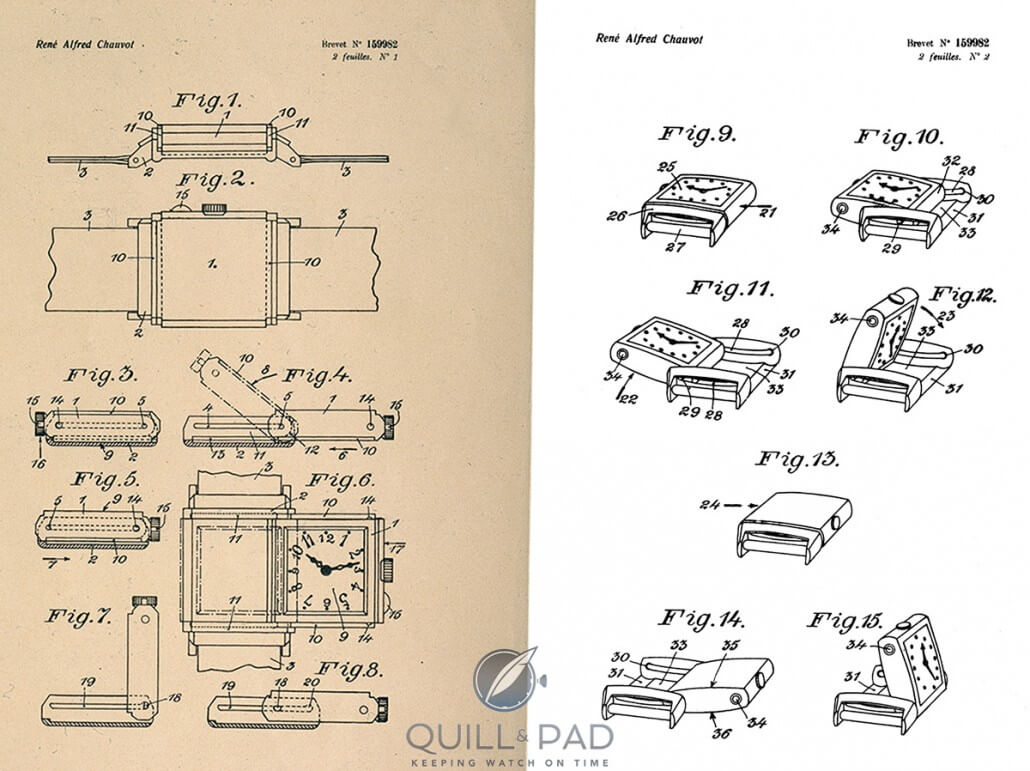


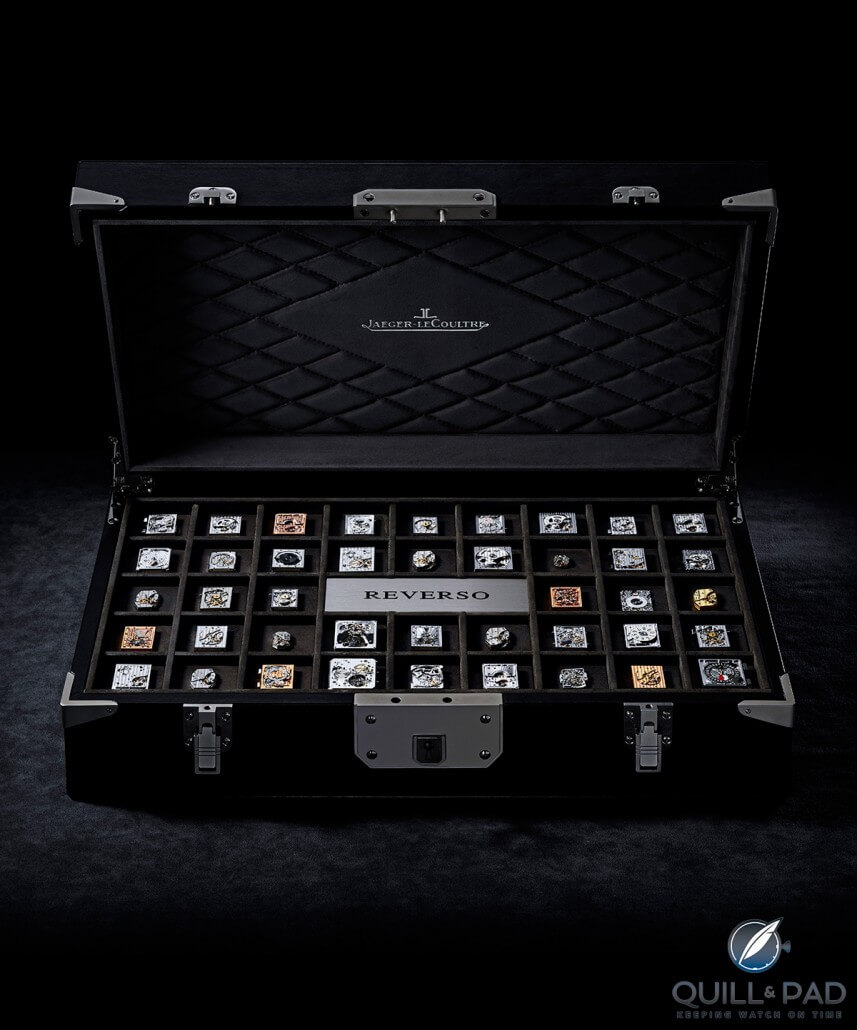












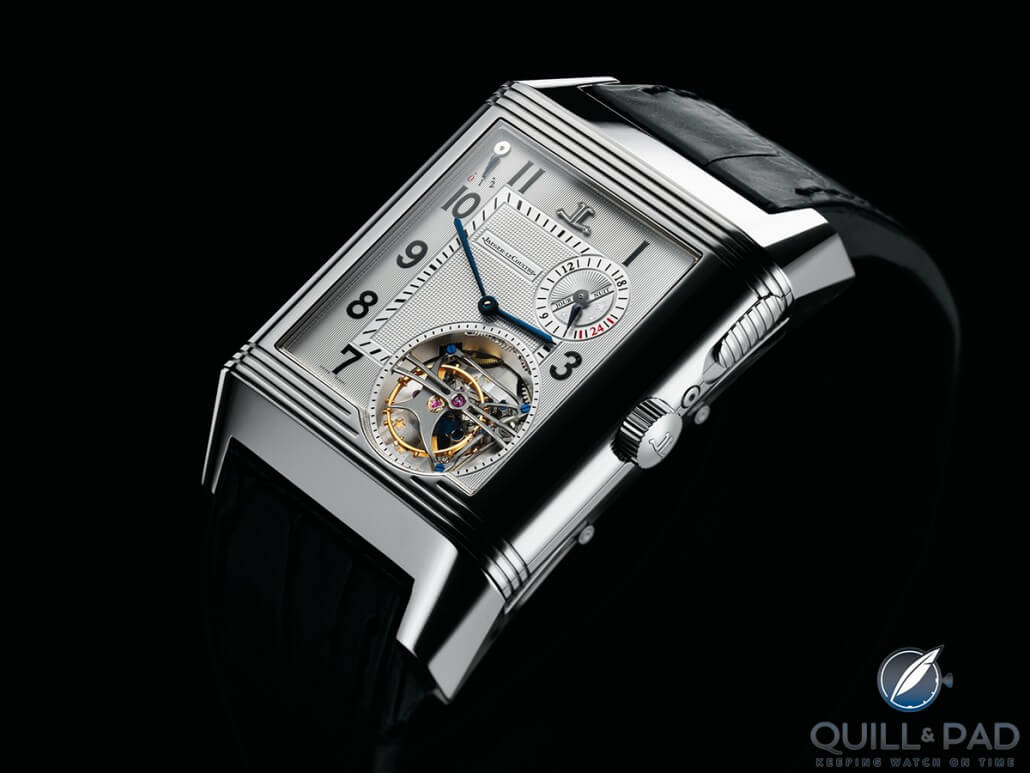
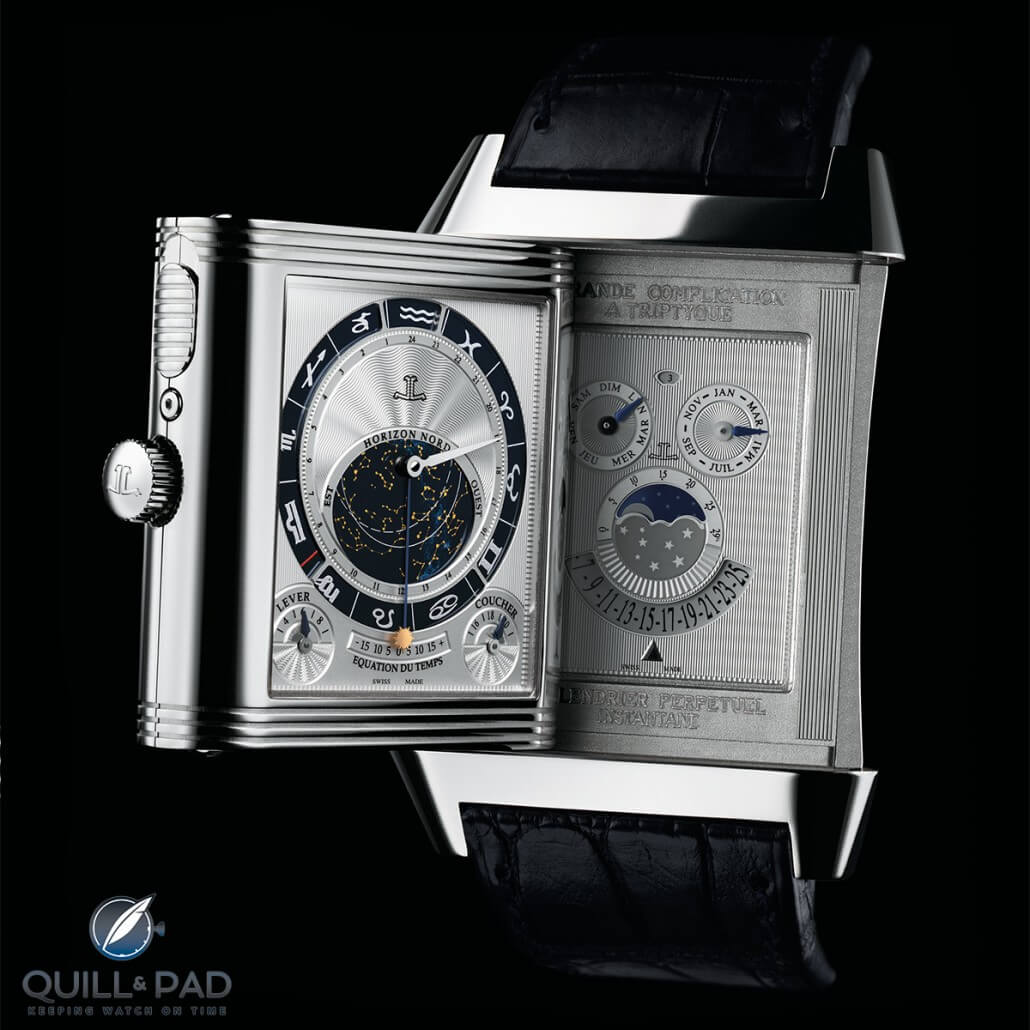








Great article to reprise, btw. Never saw it the first time around.
Just a wonderful watch, in all its variations.
And this is why we reprise these occasionally. Glad you like the Reverso as much as I do!
Great article Elizabeth.
You managed to take the reader from the beginning of the watches history till present time.
As watch lovers you made sure that we get to see what JLC offered at each segment of this beautiful watch timeline.